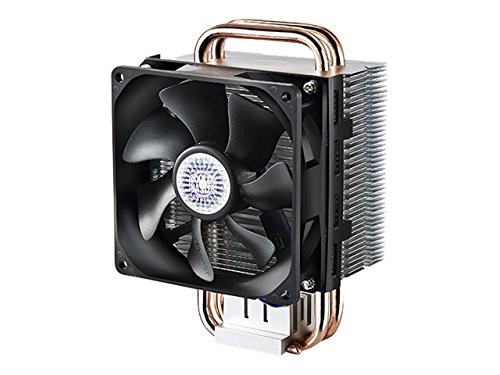I will be attempting this project in two stages. The first stage will be purely harvesting energy to run a fan. If I can get that working I will try to incorporate a microcontroller to monitor the temperature that will set off a notification when the optimal drinking temperature has been reached.
1. Running a fan from generator module
I've ordered a nice looking heatsink that should do well for the cool side of the module, the Cooler Master Hyper T2.

The fan may need to be replaced with something that runs at a lower voltage. This fan is rated for 12V, which is likely going to be tough to reach with a single peltier generator, even with the voltage boost module. It is likely I will go with a 3V or 5V fan, depending how the first tests go with all pieces thermally bonded. I would also turn the fan around backwards so it blows air forward rather than backwards. Cooling efficiency will likely go down a bit but the increased airflow over the mug would be worth it.
Copper is the ideal metal to use as the conductor that will rest up against the side of the mug. It is the metal with the best thermal conductivity. There will no doubt be some condensation on the copper, so corrosion resistance is a great benefit.
2. Temperature monitoring
Once I can successfully run a fan that has a noticeable effect on cooling, the next step will be adding a microcontroller into the mix. The plan is to use a simple temperature sensor that outputs an analog voltage, and monitor until the desired temperature is reached. From there a buzzer or LED can alert the user that the coffee or tea is ready to drink.
Rather than using batteries, I plan to try supercapacitors to power this. Since power may be scarce, I'll be sure to run the microcontroller at a low frequency and make use of sleep mode between temperature reads to conserve power.
 Scott Clandinin
Scott Clandinin
Discussions
Become a Hackaday.io Member
Create an account to leave a comment. Already have an account? Log In.